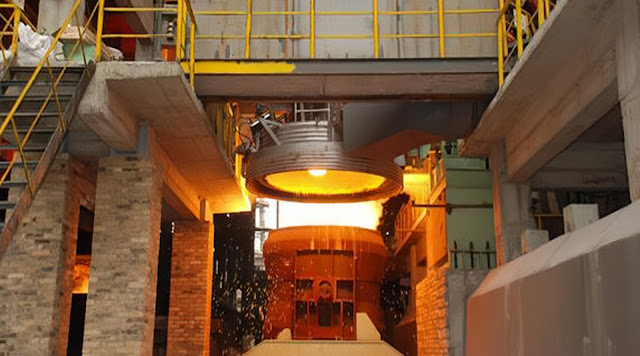Ladle Refining Furnace Process - HANI
Ladle refining furnace process: Enhancing Steel Quality.
In steelmaking, quality matters. To ensure the production of high-quality steel, various refining processes are used to remove impurities and improve the metal's desired properties. One such process is the ladle refining furnace (LRF), which is a critical step in the steelmaking process.
Features
Features of Ladle Refining Furnace Process
The ladle refining furnace process involves refining molten steel in a ladle to achieve the required composition and cleanliness. The process usually follows a primary steelmaking operation, where the starting metal is produced in an oxygen converter or electric arc furnace.
LRF acts as a secondary refining stage, providing the opportunity to fine-tune the chemical composition of the steel and eliminate impurities.
The main function of LRF is to regulate the temperature, composition and cleanliness of molten steel. The furnace is equipped with various tools and mechanisms to facilitate the refining process. One such mechanism is the injection of oxygen or other gaseous reagents.
Oxygen blowing increases the temperature of the steel, removes excess carbon, and promotes the oxidation of impurities such as sulfur and phosphorus.
Additionally, LRF uses a technology called slagging. Slag is a by-product of the steelmaking process and is added to the ladle to absorb impurities and act as a protective layer between the molten steel and the atmosphere. Slag also aids in desulfurization, dephosphorization and removal of inclusions, ensuring the steel meets the required quality standards.
In addition to adjusting the chemical composition of the steel, the LRF process also plays a vital role in temperature control. By carefully manipulating the furnace's heating elements and gas injection, the temperature of the steel can be precisely regulated, allowing for optimal casting conditions. This control of temperature ensures uniformity and consistency in the final steel product.
Additionally, the LRF process helps remove non-metallic inclusions that can affect the mechanical properties of the steel. With proper stirring and skimming techniques, these inclusions can be minimized, thereby improving the toughness, ductility, and overall quality of the steel.
The ladle refining furnace process offers several advantages that help produce high-quality steel.
First, it adjusts the chemical composition of the steel, ensuring that the required alloying elements are present in the correct proportions.
Second, the process helps eliminate unwanted impurities, such as sulfur and phosphorus, which can negatively affect the steel's properties.
Finally, temperature control and inclusion removal contribute to the mechanical integrity of the final steel.
In short, the ladle refining furnace process is a crucial step in the steelmaking process.
It produces high-quality steel by refining molten metal, adjusting its chemical composition, controlling temperature and removing impurities. The LRF process plays an important role in improving the properties of steel, resulting in products that meet strict quality standards.
With the continuous advancement of steelmaking technology, the ladle refining furnace technology has continued to develop, further improving the quality and performance of steel products.
If you have any needs, please feel free to contact us.
E-mail: saleswn@hanrm.com / inquiry66@hanmetallurgy.com (Daisy Zhai)
Tel / Whatsapp / Wechat: 0086 17791213533
Xi'an Hani Tech Co., Ltd.



Comments
Post a Comment